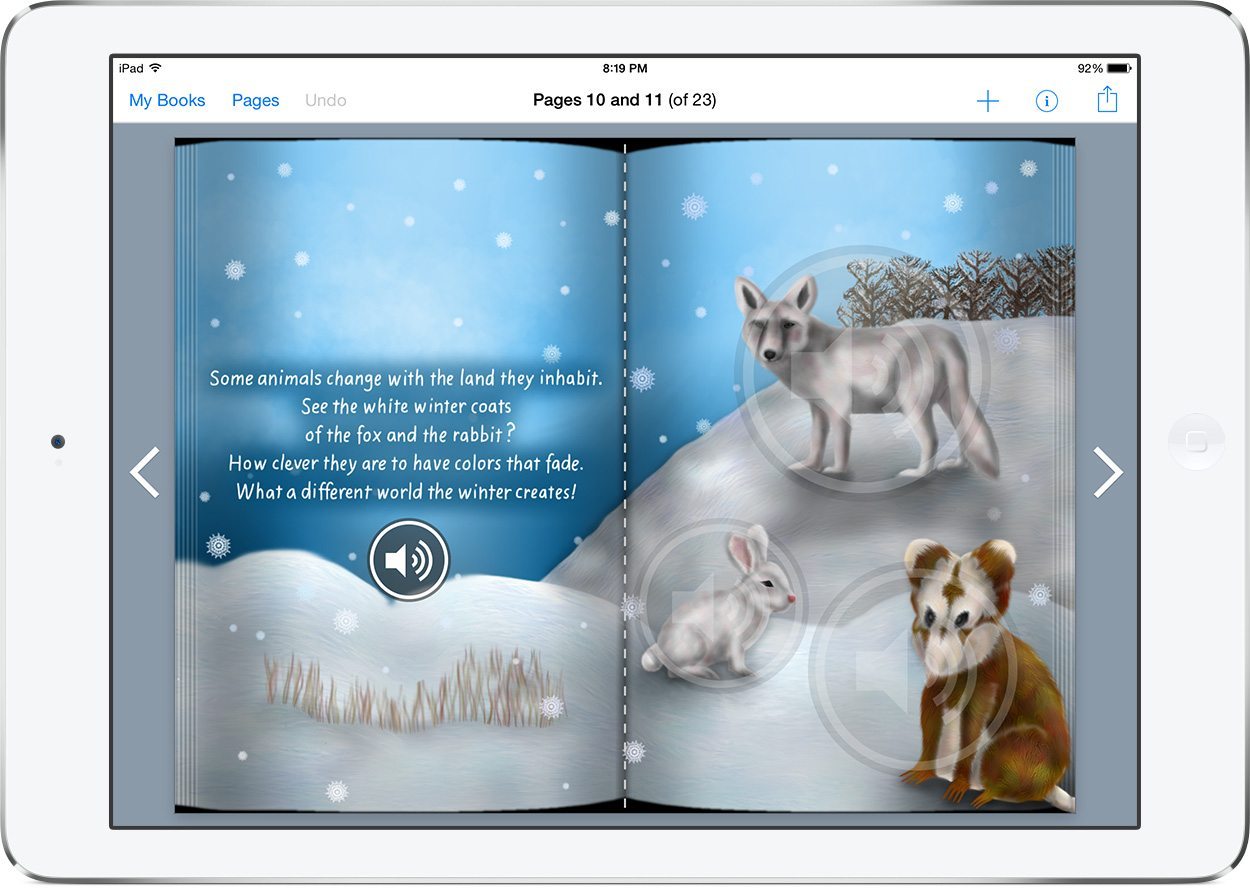
May is National Photography Month. Get kids excited about learning with photographs in Book Creator.
One of our biggest challenges as teachers is getting kids excited about learning and finding ways for our students to make personal connections to our curriculum. But doing this is as easy as taking photographs and publishing them as an anthology of learning with Book Creator.
Photography as inquiry
Science, social studies, and literature are all based on observation – noticing something in the world, asking questions about it, then trying to find the answers. But if you think about it, that’s just the basic definition of learning. Student-created photography projects taps into their innate sense of curiosity, and is key to developing lifelong learners and engaged students.
Photography is easy, familiar, and accessible. It’s also a great way to model digital literacy and have conversations about ethics (privacy of the people or actions we photograph, editing or altering images, etc). Here are a few fun and intellectually challenging ways to use photography for inquiry.
Documenting known phenomena
Based on topics from your curriculum or from students’ personal experience, choose a phenomenon to record and document with a camera. Using smartphones or tablets, students gather multiple examples from your school or community, or capture these images while on field trips and expeditions.
Have them create a Book Creator project that organizes their photos, and include text with additional information such as the time and location the image was taken, a description of the object/action/phenomenon, and other facts related to these images and your curriculum, such as historical background, definitions, or explanations of processes.


Photography as analysis
Photography allows us to freeze time, and to zoom in on objects that are far away or too small to be seen with the naked eye. Eadweard Muybridge, for example, used stop motion photography in 1887 to discover that horses left the ground as they ran–something unknown to that point because the human eye wasn’t fast enough to observe it.
Have students create Book Creator projects as analysis stories:
- Science: freeze movement of animals; use macro lenses to capture closeup images of plants; capture and label ingredients of foods.
- Social studies: capture traffic patterns, geographic phenomena, or portraits of people from different backgrounds and life experiences.
- Math and STEM: collect images of structures to see how the concepts they’re learning in class apply in the real world.
In all cases, have students use markup tools to label details and add information directly onto a photograph. Collect these images in a Book Creator project that uses additional text, links, or audio to provide context, definitions, and conclusions about these images that students have developed.
Photography for creativity
Creativity isn’t a nice-to-have project we do after our ‘real’ learning is complete. It’s a vital mindset and job skill that helps students develop original ideas, strengthen intellectual agility, and solve real world problems.
Fine art photography is an obvious place to start, but there are many other ways photography can spark a creative mindset that are especially useful in subjects like literature, math, science, and history.


Visual representation
Take a concept from your curriculum and have students create images that represent that concept, either literally (like documenting an example), or as a visual metaphor. For example, the concept of ‘contrast’ could be an old and modern building next to each other, or a fancy car parked in a working-class neighborhood.
A great way to approach this is to think of it as a way of explaining concepts to someone who doesn’t speak your language or is visiting from another time period. This activates the highest levels of critical thinking, and new research even shows that using images helps kids infer meaning to strengthen literacy.
Visual learning prompts
One of the best ways to activate inquiry and develop a creative mindset is to use a surprising or mysterious prompt. Using photographs as visual prompts to launch learning experiences creates a fun challenge for kids and helps them make personal connections to the subject and the way they will approach the assignment.
Example project using illustrations as a writing prompt
Begin by modeling the process, such as using the New York Times’ “What's Going On In This Picture?” Use one of the photos to kick off a class discussion or as a riddle to be solved using the skills and knowledge of your curriculum. Then turn it around and have students create their own Book Creator projects that compile a class set of image riddles, based on your curriculum, that they can share with an audience.
We live in a world whose currency and language is based on images. Using Book Creator projects helps us embrace photography in our classrooms to make learning relevant, fun, and meaningful.
Book Creator photography template
Did you know that Book Creator has a built in template for creating a photography book? You can find this by going to New Book > Templates inside Book Creator to use the template builder page by page, or just remix the entire book below.
Michael is an award-winning teacher, author, and international speaker in Los Angeles whose work focuses on digital and civic literacy, social justice, and student-centered learning experiences. His new book about authentic learning, Storytelling With Purpose: Digital Projects To Ignite Student Curiosity, leverages student passion to solve some of the biggest challenges educators face, like low student engagement and artificial intelligence. He is a Book Creator Ambassador, and the author of Book Creator for the High School Classroom. Find out more about Michael on his website.











